With summer right around the corner there's a lot to be excited about! Warm weather, sunshine, picnics, smoothies, and loads of fresh, juicy, ripe fruit. This summer you can take advantage of all that seasonal produce and stock up!
Freezing is the easiest and cheapest way to preserve fresh fruit and prevent food wastage. When I grocery shop I make sure to buy a good selection of fruit at different states of ripeness. I buy ripe fruit to eat at the beginning of the week, and unripe fruit to eat later in the week. When I end up with too much ripe fruit at one time, I freeze the excess to use in smoothies and other foods.
Room temperature fruit creates smoothies with a thin juice-like consistency. Using frozen fruit is the secret to creating those super thick, frosty smoothies - the kind that's perfect for cooling down on a hot summer day! I rely on smoothies a lot in the summer, I load them up with enough nutrient-packed ingredients to make a meal that leaves me feeling satisfied and energized. In the summer I love anything I can eat without turning the oven on!
While freezing fruit is certainly easy, there's one essential step necessary to keep each piece of fruit frozen individually. Chiseling into a block of frozen fruit to make a smoothie isn't exactly convenient. Commercial companies flash freeze fruit on flat trays to preserve the fruit in individual pieces. At home we can't flash freeze but we can ensure that our fruit stays in single pieces by using the tray method.
Store bought frozen fruit is a great alternative to freezing your own and it's a great item to stock up on when it's on sale. Commercially frozen fruit is flash frozen at it's peak ripeness so it's often more nutrient rich than the fresh fruit at your grocery store. Freezing it yourself is a great way to preserve excess fruit you may already have on hand and prevent wastage.
Now, here are step-by-step instructions for freezing fruit the right way!
Preparation
Ideally you want to use fruit that's perfectly ripe, not overripe. As fruit becomes overripe it contains fewer and fewer nutrients.
- Start by washing and/or peeling your ripened fruit.
- Remove any imperfections or bruising as necessary. Cut larger fruits into pieces small enough to blend.
- Grab a cookie sheet, cutting board, or something else that you can leave in your freezer for a few hours. Line it with a piece of plastic wrap, wax paper, or parchment paper.
Hint: Aside from removing bruising I usually leave my bananas whole, I like to use one full banana per smoothie and this way I can just grab one whole frozen banana. I don't find this inconvenient as bananas are soft enough to cut even when they're frozen. Alternatively, you could cut each banana into 4 quarters, that way you know 4 pieces = 1 banana.
Freezing
- Arrange your chopped fruit on your cookie sheet and place it in the freezer, making sure that it's secure and level so it won't move or fall if the freezer door is opened.
- Freeze overnight.
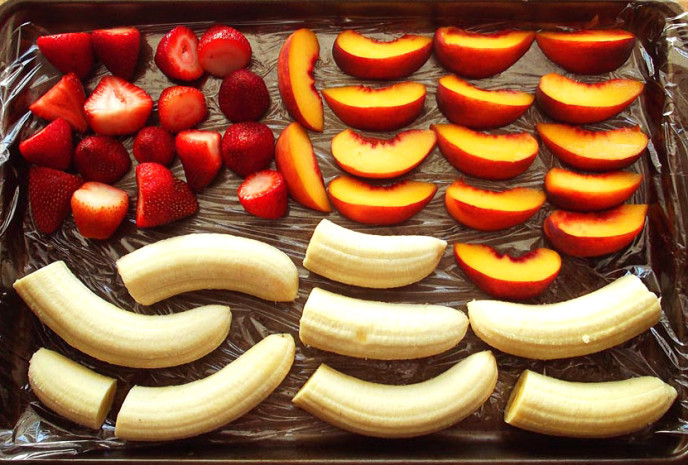
Cleaned, trimmed, and chopped strawberries, sliced peaches, and peeled bananas arranged on saran wrap for individually frozen fruit pieces.
Storage
- Once your fruit is completely frozen, you can transfer it into an airtight freezer bag or container for storage. As long as you don't let your bag of fruit thaw at all, each piece of fruit will stay as individual pieces. Most frozen fruit is best used within 6 months.
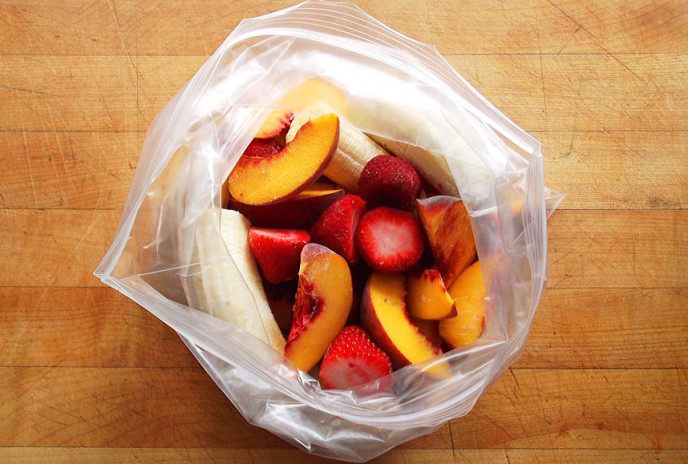
Individually frozen pieces of fruit can now be stored conveniently in a freezer bag without sticking together.
There's no limit to which types of fruit you can create smoothies with. I always try to keep some frozen bananas on hand as they do an excellent job of making smoothies with a thick, creamy texture. Some of my other favourites are:
- mangoes (a good substitute for bananas)
- berries: strawberries, blueberries, raspberries, and blackberries
- stone fruits: peaches, nectarines, cherries
- pineapple
- bananas
- grapes
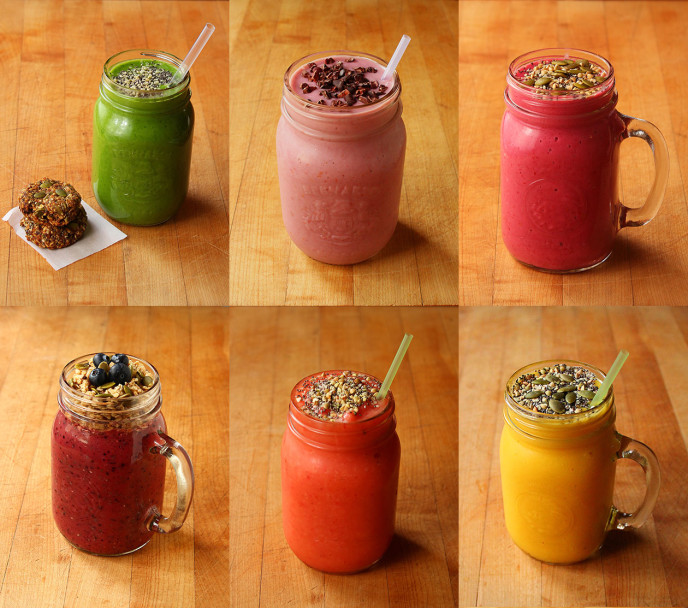
Green smoothie, Creamy Berry-Banana-Mango smoothie, Raspberry-Banana smoothie, Blueberry-Mango smoothie, Green Tea Fruit smoothie, Mango-Orange-Banana smoothie. [1][2][3][4][5][6]
Blending
Smoothies: For thick and creamy smoothies, blend together 1 cup of liquid with 1 cup or more of frozen fruit. Plant milks are your best bet for creamy smoothies, try soy, almond, hemp, flax, or oat milk for best results. Fruit juices and coconut water are great options too. For an extra creamy and luscious smoothie, be sure to include some banana in the mix. {View Smoothie Recipes}{View Smoothies on Garden of Vegan}
Smoothie Bowls: Really thick smoothies made with lots of frozen fruit make a great base for smoothie bowls. Serve a thick smoothie in a chilled bowl and top with a combination of fresh chopped fruit, nuts, seeds, granola, and super foods like hemp hearts, chia seeds, buckwheat groats, or cacao nibs. {View Smoothie Bowls on Garden of Vegan}
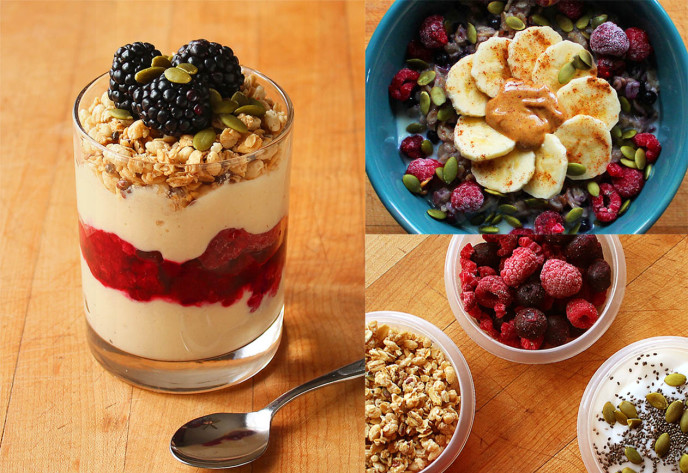
Granola & raspberry soy yogurt parfait, Frosty berry-banana oatmeal, Granola & mixed berry coconut yogurt parfait to-go. [1][2][3]
Toppings
Oatmeal: Frozen berries are especially great for topping oatmeal. Alternatively, you can also mix them into the oats while they're cooking to thaw them quickly.
Parfaits: Vegan yogurt parfaits are an ideal place to use frozen fruit. Simply layer your favourite vegan yogurt into a cup or small jar, add ⅓ of frozen berries, and leave in the fridge until the berries thaw. Serve with ½ cup of granola. This makes a perfect snack or breakfast on the go!
Dessert Topping: Gently warm frozen fruit in a saucepan over medium heat. Add a touch of organic cane sugar (or your preferred vegan sweetener: coconut sugar, agave, brown rice syrup, etc.) Use the warm mixture to serve over a simple dessert like vegan ice cream.
Baking
Baking Muffins, Cakes, and Bars: Frozen berries are perfect for muffins and coffee cakes. Add the frozen berries along with the dry ingredients of your favourite muffin recipe and bake as usual. Take care not to add too many berries or they can make baked goods watery. Try making our Chocolate Raspberry Bars with frozen raspberries!
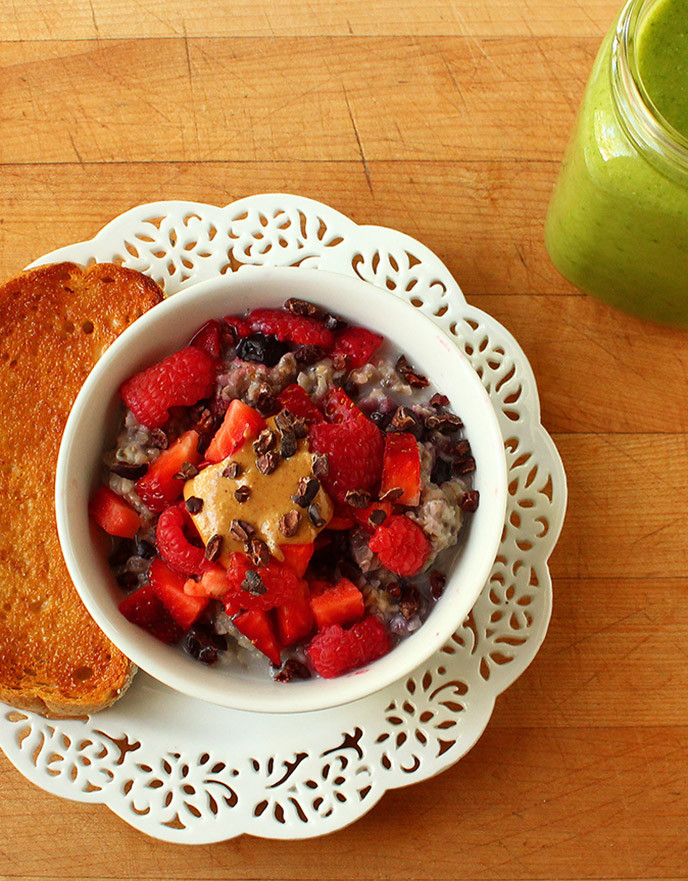
Green smoothie (honeydew melon, matcha powder, frozen mango, orange juice, and coconut water), chia berry oatmeal (oats, chia seeds, flax milk, organic cane sugar, and frozen blueberries) topped with raspberries, strawberries, peanut butter, and cacao nibs. Toasted light rye bread with Earth Balance.

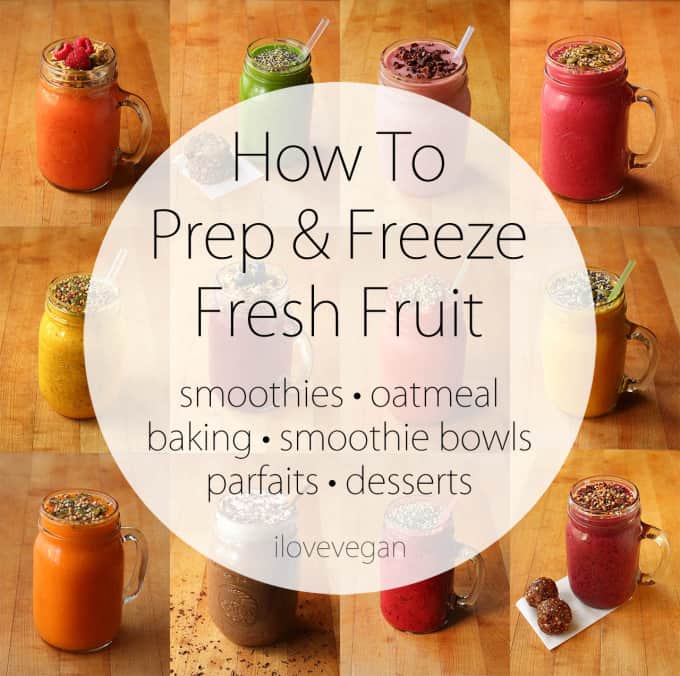
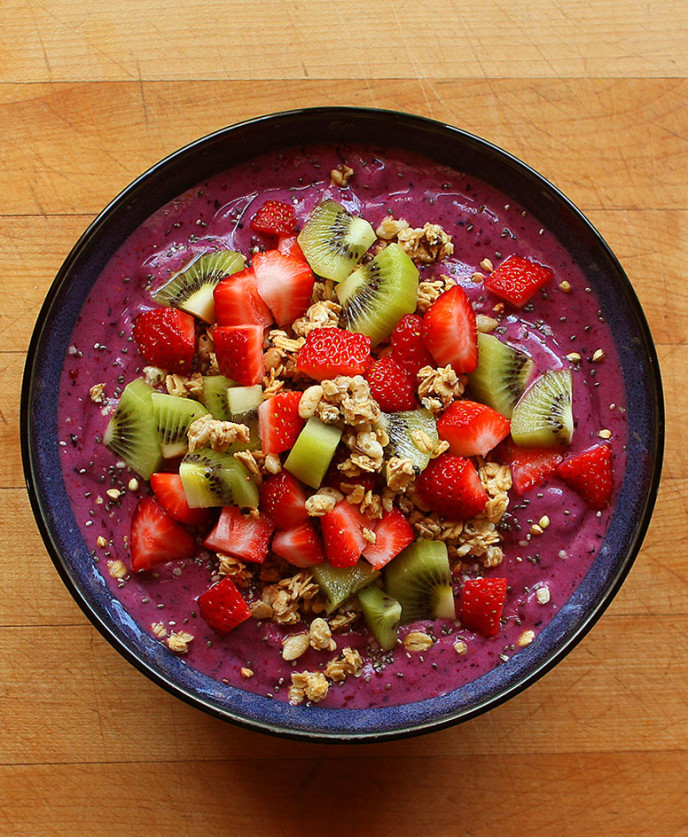
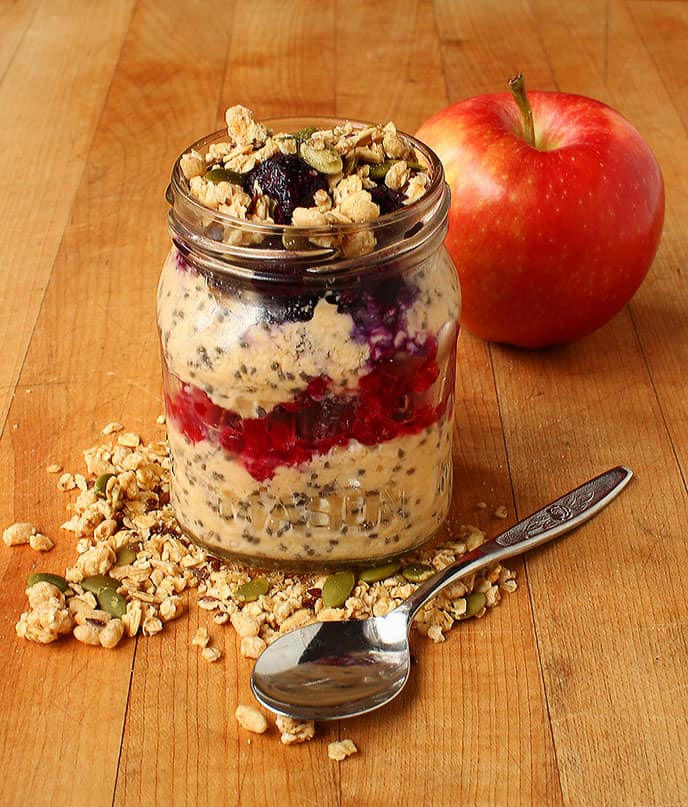
Cheryl
Finally some warm Spring weather ....time to crave smoothies ...and yours have the ultimate in taste and nutrition.
And your beautiful posts--they inspire me to reach for healthier foods. This is a great website for healthy living ideas.🌱aahh......Spring💚
natasha
hello brittany! thanks for sharing this! do you know if citrus fruits can be frozen? i've never tried it.. but there's this big bag with at least 30 grapefruits at home and i really don't them to go to waste! but.. 30 is so much!
Brittany
Absolutely! Frozen grapefruit will be great for smoothies!